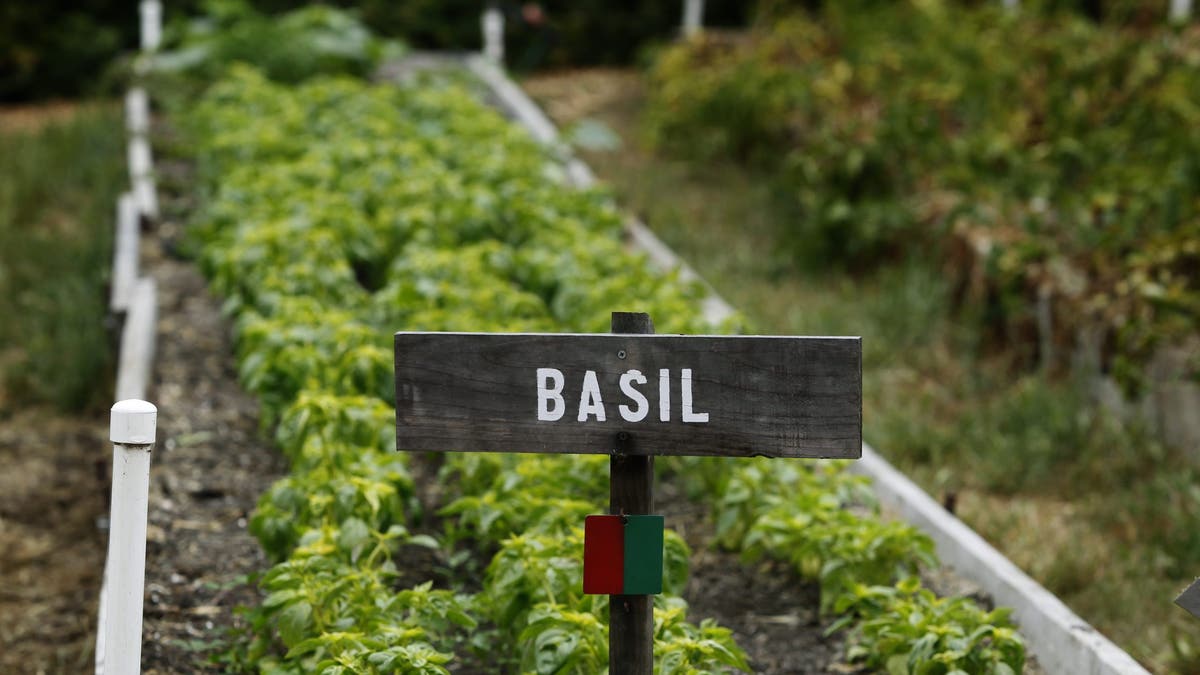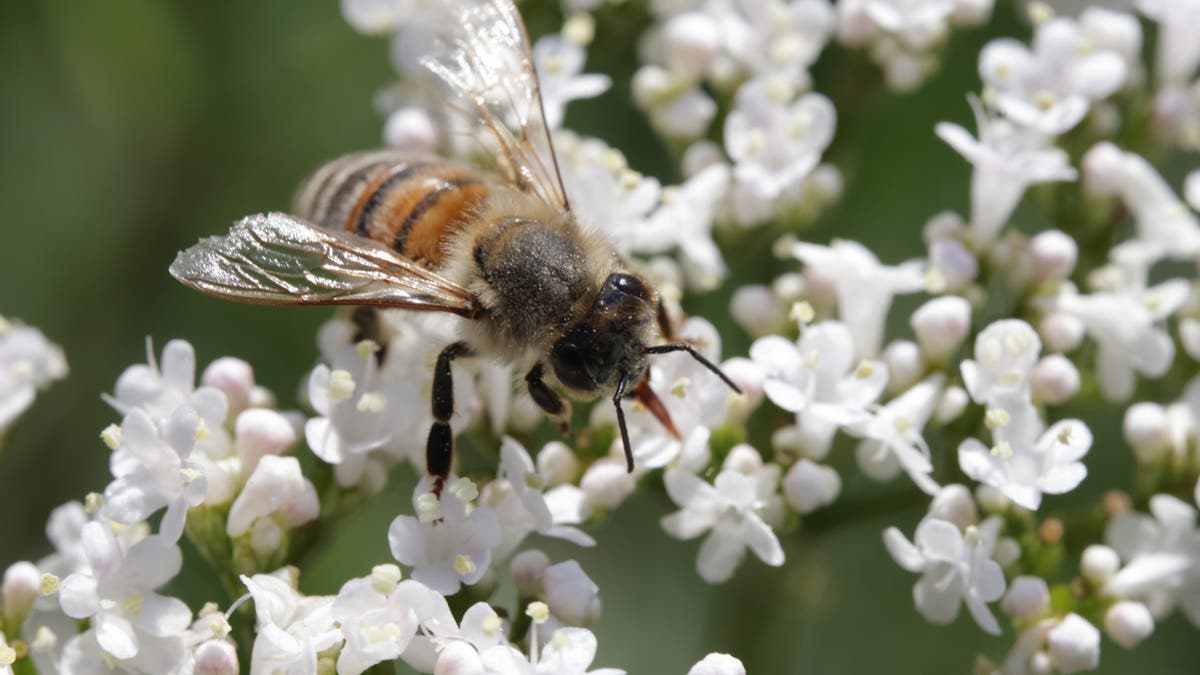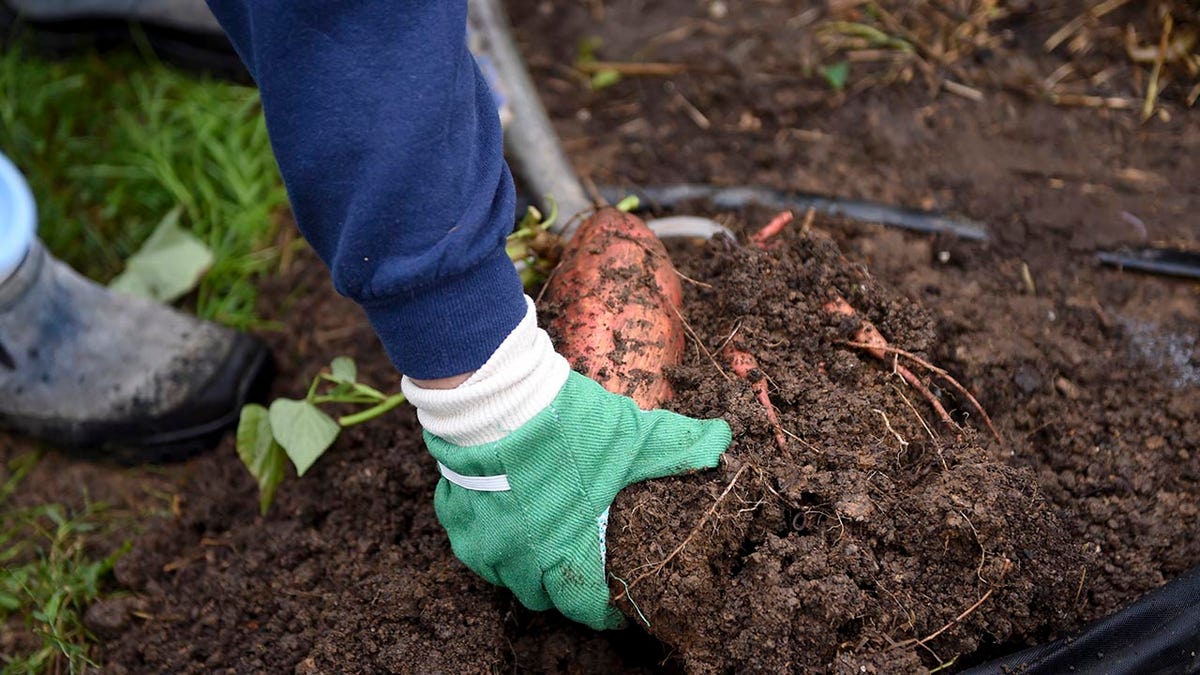Grow more, spend less: Farmers share self-sufficient gardening tips to slash supermarket costs
Joe and Ida DeFrancesco share some tips to help viewers save money by gardening at home.
Gardening is a way of life for some but a timeless hobby for many.
Once the basics have been mastered, advanced gardeners can elevate their skills for the stunning scene and bountiful sustainable vegetable paradise they imagine.
Advanced-level tips are available for those who are on the path to becoming seasoned green thumbs.
BE WELL: START A GARDEN AND REAP THE HEALTH BENEFITS
These tips will help anyone build a sustainable patch and optimize the growth of vegetables by the time they harvest.
- Organize your garden
- Use nutrient-rich soil quality
- Plant at the proper depth
- Carefully choose the most suitable vegetables to grow
- Feed and water the plants on their specific schedule
- Use mulch for natural weed control
- Maintain plant health to avoid insects and diseases
- Be sure to prune
- Prepare for animals
- Let nature work for you
- Start seeds indoors during harsh weather
- Find time to enjoy your garden
1. Organize your garden
The first step toward cultivating a thriving garden is deliberate planning.
Gardeners often need to consider their personal preferences and the compatibility of the items they plant to avoid unnecessary challenges when they grow various vegetables.
Successful garden organization requires thorough documentation of how the garden should look during the different seasons and what produce best suits the gardener’s culinary goals.

Different vegetables grow better in different soils and with varying watering levels. (Paul Chinn)
Ideally, the garden spot should receive ample daily sunlight because most vegetables, such as melons, peppers, tomatoes and cucumbers, tend to grow best in more sunlight.
It is advisable to avoid areas shaded by trees, as they will block out direct sunlight, and the roots will compete for soil moisture against the planted vegetables.
A succession planting plan can ensure a regular harvest throughout all seasons and will require scheduling a timeline for the garden.
2. Use nutrient-rich quality soil
Knowing the look and feel of the garden’s soil will be time well spent.
The soil type, quality and texture where the vegetables will grow are significant factors in the garden's success.
ALREADY THINKING ABOUT SPRING? THESE 10 GARDEN ITEMS CAN HELP YOU PREPARE
Observation can begin with feeling the soil’s texture and is enhanced by digging up a handful for close examination. The soil should feel granular and appear to have clumps.
Poor soil is often cheaper and more cost-efficient for gardeners, but it usually makes it difficult for roots to grow.
Soil that is too sandy will dry quickly, making it difficult for the plants to absorb the water, and other soil will be too nutritionally poor for some vegetables.

Analyze the soil to ensure that it is the right choice for adequate growth of your chosen plants. (Sean Gallup)
Amending the soil with organic matter is important to maintaining quality soil.
"My garden is my most beautiful masterpiece."
This can easily be accomplished by mixing compost directly into the soil. Compost helps increase the soil's retention of water and nutrients. Incorporating compost can also help reduce the need for fertilizers and pesticides. Gardeners should purchase soil test kits to see what fertilizer is necessary to improve the soil quality.
3. Plant at the proper depth
Planting depth refers to the distance a plant is set below the soil surface, a critical factor since incorrect depths can reduce a plant's lifespan.
If vegetable seeds are not planted deep enough or adequately, their optimal growth will be shortened or stunted for many months, causing a delay in the harvest.
Plants can die if they are planted too deep or too close to the surface, and their roots will not be able to grow.
Each vegetable and other plant has an optimal planting depth, which should be researched and adhered to for ensuring proper growth.
4. Carefully choose the most suitable vegetables to grow
Careful consideration of the gardener's goal can help a gardener narrow down their choices of what their family wants to eat and what can grow in their climate.
GARDENING FOR BEGINNERS: FRUIT AND VEGETABLE GROWING TIPS FROM THE MASTER GARDENERS
Once the broad decision has been made, discovering the right seed variety for certain vegetables that suits individual needs is an added challenge, as it requires experience and time to experiment with various seed brands and cultivation techniques.
Some tomato or cucumber seeds vary in size, yield and harvest time based on the quality of the seed and how it was bred or selected by the company.
Research the best brands to purchase to make the harvesting process easier and to grow the tastiest vegetables.
5. Feed and water the plants on their specific schedule
Establishing a routine for watering and fertilizing plants is crucial for their growth and survival.
The primary focus during watering should be on the root ball rather than the plant leaves, as the roots require direct water absorption for optimal growth. Watering the roots once or twice a week is preferred to providing smaller amounts daily for optimal moisture retention.

Compost and mulch your soil to keep it full of nutrients and reduce weeds. (Creative Touch Imaging Ltd./NurPhoto)
The soil type, climate and other factors will impact the garden’s watering needs.
During the spring and summer, plants benefit from being fertilized every few days.
6. Use mulch for natural weed control
Weeds create some of the most disastrous conditions for plants by taking away moisture and nutrients necessary for the vegetables to grow.
Weeds can be especially disastrous as the plants emerge from the ground and even in the early seeding.
"It will never rain roses: when we want to have more roses we must plant more trees."
To prevent weeds in a more extensive garden, add a layer of mulch around the plants to block them from invading the garden. Keeping a layer of mulch throughout the garden will help deprive weeds of the light they need to grow and spread.
Mulch is multifaceted in that it also helps to enrich and improve soil moisture retention.
7. Maintain plant health to avoid insects and diseases
Nearly all gardens are affected by routine plant diseases and insects, such as slugs and snails, that will destroy the vegetables and stall the garden's growth.
These pests are likely to go after weak plants. Plants have many instinctual adaptations to defend against these unwanted attacks.
Following the proper fertilization, watering, pruning, soil and feeding recommendations for the garden is the best way to naturally prevent diseases and pests from entering.
A safe pesticide can be used when all else fails and disease forms on some plants. In addition, you should monitor and control the pest population growing around your vegetables.

To protect your vegetables from deer and other wildlife, you should install fencing or a barrier around the perimeter of your garden. (Lauren A. Little/MediaNews Group/Reading Eagle via Getty Images/File)
8. Be sure to prune
Pruning is an essential task many gardeners regularly commit hours to, primarily when overseeing many plants.
Pruning helps the plants grow more efficiently for harvest. Knowing when to prune individual plants according to their growth cycles and in what shape can help keep woody plants healthy and free of disease.
9. Prepare for animals
Another threat to gardens comes from animals like dogs, groundhogs, rabbits and deer, which often feed on plants as they near harvest.
Although these animals can be a consistent nuisance for gardeners, installing standard fencing around the garden's perimeter offers essential plant protection.
CLICK HERE TO SIGN UP FOR OUR LIFESTYLE NEWSLETTER
Animals find new seedlings especially tasty. If seeds are beginning to sprout or the garden contains plants fresh from the nursery, trunk wraps can be used around new plants, and a net covering can protect planter boxes.

Bees, butterflies, moths and beetles pollinate plants. (Historic England Archive/Heritage Images)
10. Let nature work for you
Some of the bugs and creatures a garden naturally attracts can benefit the plants. Careful research of garden pests can help improve the soil, suppress weeds and prevent other pests from taking over.
Many garden visitors are not only harmless but helpful. Some of these typically helpful critters include:
- Ladybugs and lacewing larvae. Known for eating aphids that can overwhelm plants.
- Centipedes and ground beetles. These insects help break down organic matter and then release the nutrients to the plants.
- Bees, moths, butterflies and wasps. Among other visitors, these insects play a role in pollination.
11. Start seeds indoors during harsh weather
Harsh weather conditions pose challenges to gardening.
Advanced gardeners extend their gardening activities throughout the year by initiating indoor seedlings. This approach is beneficial during frigid winter cold or scorching summer heat, offering a headstart on regular growing periods.
Gardeners without access to a greenhouse can build a small-scale alternative.
CLICK HERE TO GET THE FOX NEWS APP
Using household items, like berry containers from grocery stores, that retain warmth and moisture can act as a makeshift greenhouse, blogger Anna Chesley recommends.
12. Find time to enjoy your garden
Building and overseeing a garden is a lot of work and takes an individual's discipline and time.
However, the reward and achievement from growing one’s food makes all the effort worthwhile.
Taking the time to enjoy and reflect in the garden space is essential for any home gardener – especially when not busy keeping out hungry deer.
Phillip Nieto contributed reporting.


